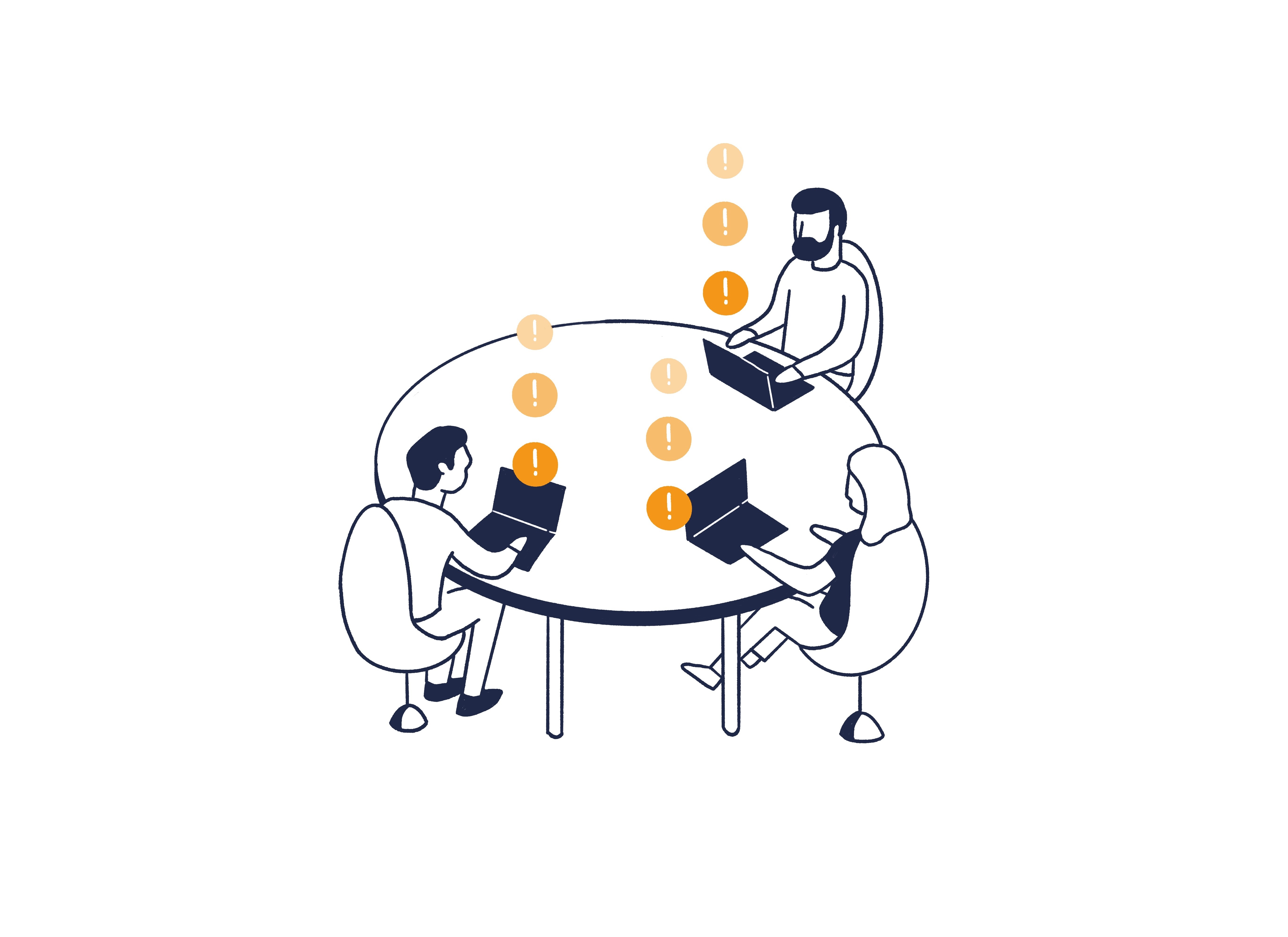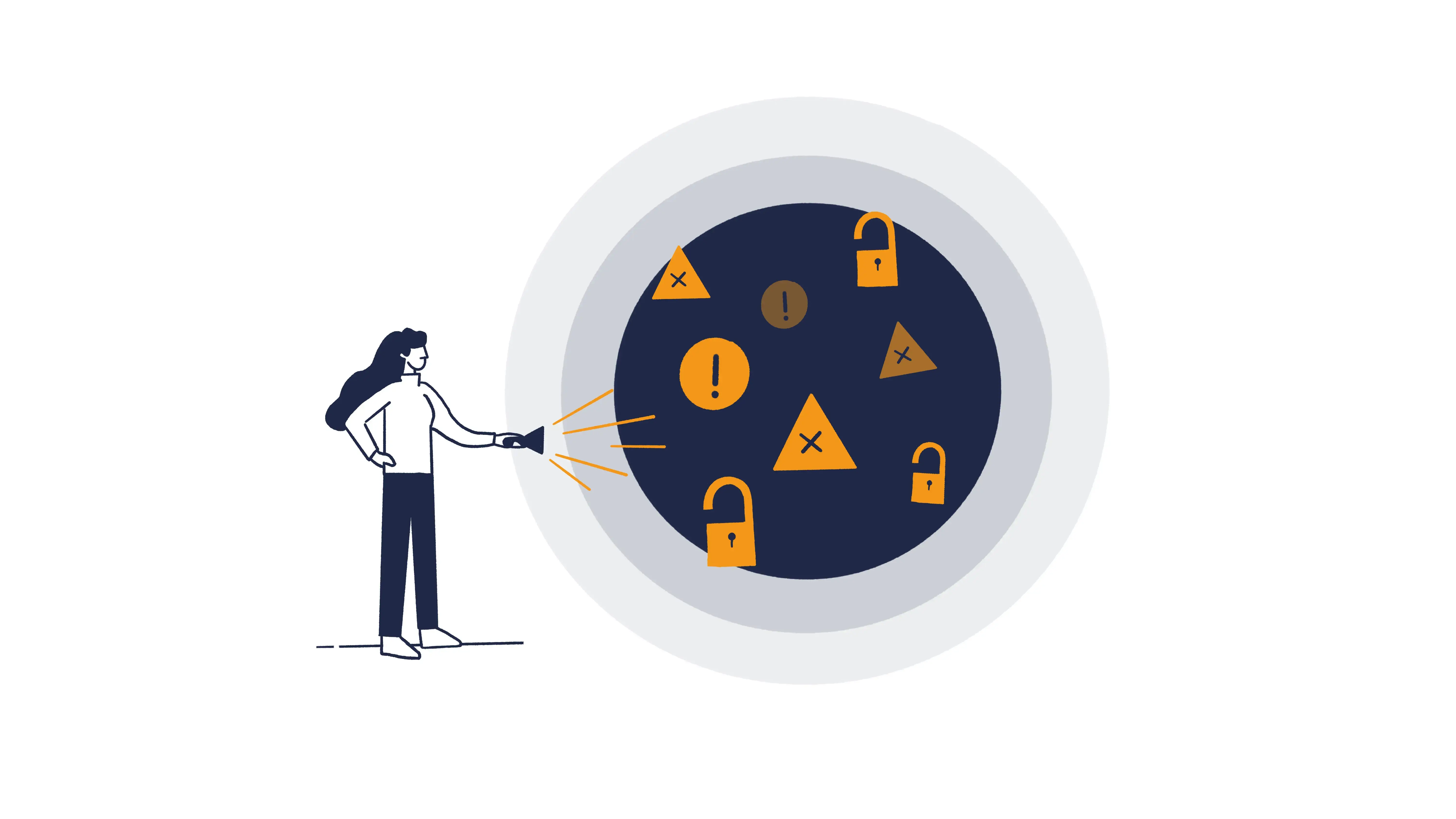What is Risk Intelligence - and how can it help you?
Business leaders constantly make investment decisions that balance out risk and reward. It’s no different in the cyberspace. The digital world is full of risks, yet businesses can be hesitant to invest confidently in cyber protection. So how can you make well-informed decisions to improve your cyber protection and do so efficiently? The answer lies in Risk Intelligence. Risk Intelligence helps businesses clearly understand their cyber risks and how to improve their security posture efficiently.
The only company that is 100% safe from a cyber attack is one that is disconnected from the internet. Of course, this isn’t an option in the world we live in. So, the first step in protecting yourself from cyber threats is to build a ‘castle-wall’ around your digital infrastructure. That said, you need to communicate with the outside world, so the wall can never be completely closed. Then there’s the human factor. ‘Castle residents’, let’s say, who can be misled into opening windows or doors. These are exactly the kind of holes in your defence that attackers misuse to hack your business. And given the chances of getting hacked are 1 in 5, these weak points need to be taken seriously.
Prevention is better than cure
Since there are always going to be weak points in your defences, it’s best to identify the most well-known weaknesses before attackers can strike. Because that’s what attackers do. They continuously scan the internet for entry points that can be easily exploited. Maybe a port is left open, or they found an employee’s password through an online leak. Hackers will attack companies that are easy targets. By leveraging the huge amount of data at our disposal, our risk insights show us common weaknesses that attackers can exploit. But even more importantly, they can show us if and why a company is an easy target. We do this by comparing one company’s exposure to that of hundreds of thousands of others. With actionable recommendations, we show the most effective ways to resolve your vulnerabilities.
Data-driven
Since cyber risk exists in an ever-evolving landscape of threats and targets, risk is not something that can be expressed in an absolute value. It’s relative. So if your neighbour is an easier target, opportunistic attackers are much more likely to go for them. That’s why we use a data driven approach to generate comparative risk insights and recommendations. It helps us to understand how you stand out within a defined risk landscape. We use data from many different sources, starting with the outside attack surface. Internet-facing assets are scanned for vulnerabilities, misconfigurations and other ways they can be exploited. However, this is where visibility often stops. External scans, like these, only inspect the ‘castle wall’. They stop short of investigating the castle’s interior and its resilience against attacks.
Inside knowledge
Assume breach
As threat exposure doesn’t stop at a network’s border, neither do our risk insights. We assume attackers can get an initial foothold in your castle. This is known as ‘assume compromise’ or ‘assume breach’. We identify the defences an attacker will face once in and make actionable recommendations on how to improve configurations so making it harder for attackers after they have gained access. This gives our managed XDR (Extended Detection and Response) service the time to respond and to kick the attackers out before they can do any harm. To generate these insights, we use telemetry from customer computers, the servers we protect and all assets reachable via the internet such as websites and management portals. Additionally, we analyse the cloud environment as well as data from employee behaviour, such as phishing awareness test results.
Protecting the cloud
Nowadays, most companies typically defend more than one castle. As more and more data and processes are moved towards the cloud, it becomes one of the most important assets to protect. Cloud environments allow for a lot of custom settings and are thus prone to misconfigurations, accidentally exposing more to the outside world than is strictly necessary. Our Risk Platform scans the cloud environment from the outside and uses internal configuration settings to check for vital security-related problems.
Conclusion
You might have heard the phrase “you don’t need to outrun a bear, you just have to outrun the person next to you”. The same is true in the world of cyber security. Globally operating threat actors think like businesses and aim for the largest bounty with the least amount of effort. For smaller organisations, who often can’t afford in-house IT security departments, risk insights and recommendations can stop you from becoming the low hanging fruit and make life difficult for any attacker. This 360 degree, comparative view gives you the clarity you need before making any initial or ongoing investments in cyber security.
How else can Eye Security help?
When an attack inevitably occurs, our Managed XDR service helps stop it in its tracks, before damage can be done. With the addition of our optional insurance add on, Eye Security can give you the peace of mind you need to do business safely in the digital world.
Want to start a conversation? Contact us on +31 886444888 or here.







